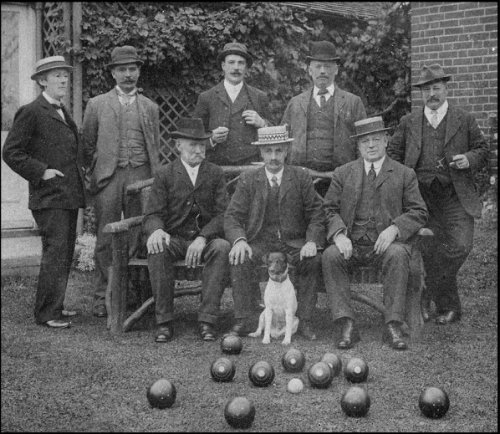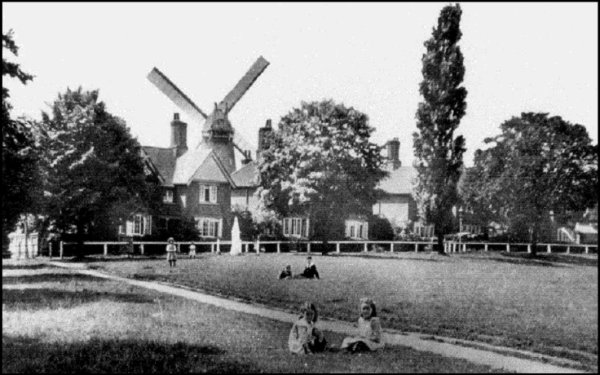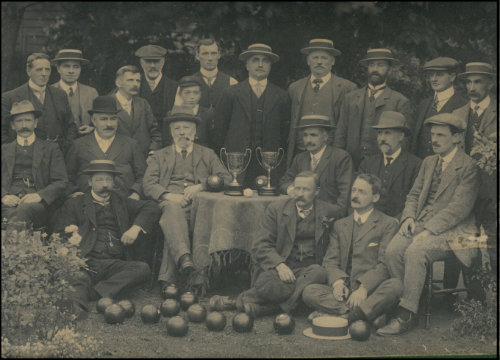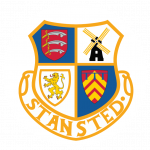Club History
The Early Years
Life like the game of bowls is but an end, which to play well this moral verse attend. Throw not your bowl too rashly from the hand, first let its course by reasons eye be planned. Lest it roll useless over the verdant plain, Thus sauguine life is often spent in vain.
Bow not too straight, in life observe the same, the narrow minded often miss their aim. Nor yet too wide, with caution eye your cast, use not extent of green, or life to waste. Mark well your bias, here the bowling rule, scarce needs a comment on the moral school.
Bowl not too short, you but obstruct the green, like those who loiter on lifes public scene. One trick avoid in bowling play, oh never, neever block your neighbours play. These rules observed a man may play his game, On this small spot, or through the world with fame.

The Brambles 1904
Bowls may well have been played in Stansted before the turn of the last century. So far as we know no records exist to prove this.
Such records that do exist however show that Stansted Club as we know it originated with Mr Philip Buck of Watford who came to live in Stansted about that time and took up residence at The Brambles in St. Johns Road.
Being very fond of bowls he invited local dignitaries and businessmen to his home to play.
The photograph was taken there in 1904 by C.A.Tadman.
Eventually a two rink green was laid there and from letters we learn that this was used in 1906.
Accordinly it is reasonable to assume this was the first Stansted Bowling Club. As membership increased it was necessary to find another site and the first formal mention of Stansted Bowling Club was in the local press in 1910.

Founder of Stansted Bowling Club 1906.
The Brambles St. Johns Road.

Greens Meadow. June 10th 1910
Although for the purpose of the 75th anniversary celebrations we adopted 1912 as the date of the founding of the club this was in fact the year that the club opened on its present site.
Two years previously it was recorded in The Herts and Essex Observer of April 1910 that a new bowling club was being opened in Stansted. A green had been prepared in a pretty corner of Greens Meadow and it was expected to open soon with approximately 25 members.
In June 1910 it was further reported that Stansted Bowling Club was opened on Wednesday evening by the President William Fuller-Maitland who declared it one of the most enjoyable evenings he had ever spent.
This is the forst formal mention of a bowls club in Stansted although as we have already seen, a two rink green was in operation at The Brambles in 1906. However it must have been a very proud day for Philip Buck whose concept it had been.

Recreation Ground 1912
Whilst play continued at Greenfields, Mr Buck with Mr Tissiman commenced to search for abetter site. Eventually they found a plot behind The Post Office and approached the owner the late Sir Walter Gilbey who leased it to them for a nominal sum and kindly gave them the turf required. Local farmers did the carting gratuitously and Mr William Fuller-Maitland offered them anything else that was needed. They were left to find the sum of £150.00 to complete the work on the green and pavillion etc. It seemed a lot of money but in three years thay had paid off the full amount.
On June 6th 1912 Mr William Fuller-Maitland the club president opened the green in the presence of Sir Walter Gilbey and several’ members of the Bishops Stortford Bowling Club. Mr Fuller-Maitland was presented with a minature wood as a memento.
Over the years since that happy day many distinguished persons have been members or associated with the club. Amongst these are Lord Blyth, Sir Charles Gold, Lord Fitzgerald, J.Arthur Findlay, the author and Major Cawkell who as well as being president for many years was also the local fire chief.

This view of the Recreation Ground was soon to become well known to the bowlers of Stansted for in 1912 the club was to move to its present home. Judging by the dresses of the little girls this photograph could well have been taken at the time. Many years later the windmill was to be incorporated into the club blazer badge.
Recreation Ground 1913
The cups displayed on the table in the photograph are still keenly fought for today. The friendly rivalry between our club and Bishops Stortford and Havers Park Bowling Clubs for the Cooper and Kent Cups has continued unabated for 93 years. Only the war years intervened. The Buck Cup not yet presented when the photograph was taken is still also hard fought for by our members.


First President
It is thought that William Fuller-Maitlands ancestor was a Norman Knight from the Contentin in Normandy. His name was Mautelant and he fought William the Conqueror at the battle of Hastings in 1066. Mr Fuller-Maitland played cricket for Oxford University and was a right hand bat.Av 13.85 from 62 innings. He was married to Evelyn Coulston Gardner daughter of Baron Gardner. He moved from Stansted in 1921 and died in Kemp Town Brighton on November 15th 1932 (aged 88 years 193 days)

Born May 6th 1844, Stansted Hall, Essex

The End of the Beginning
This is a humble attempt to bring together such fact as are known of the beginnings of the club gleaned from old photographs and from personal recollections of many of our older members. Sadly many of these elders are no longer with us and the minute books up to 1923 are missing which is a great shame. These things should be cherished and not thrown away.

